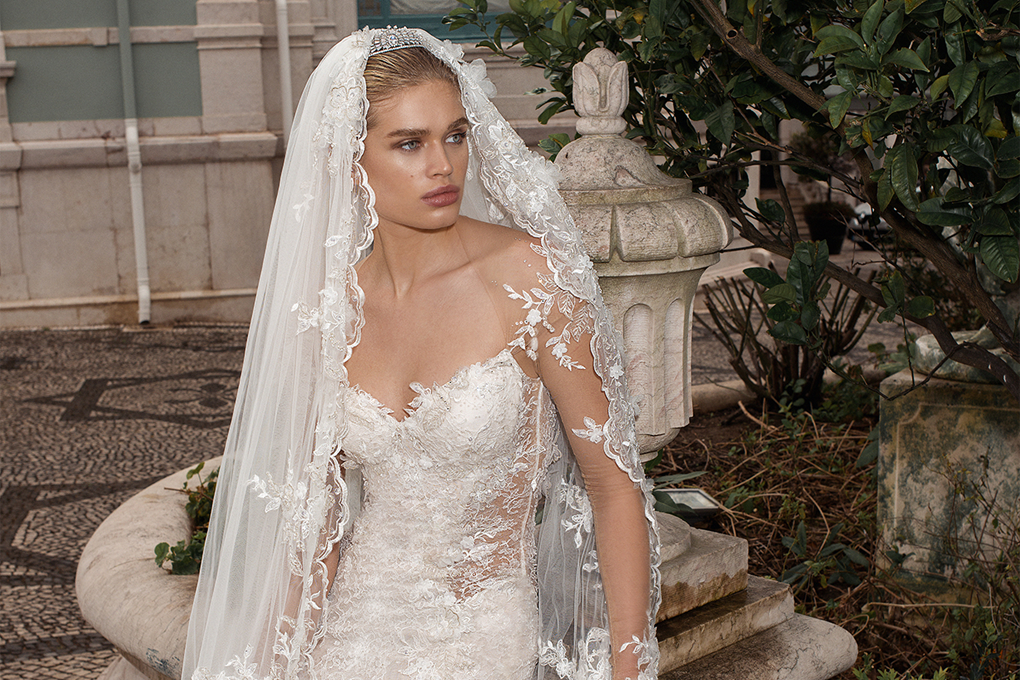
Bridal gowns that channel your culture’s wedding traditions
Written By Ivette Manners
August 20, 2019
Food and music aren’t the only ways to incorporate your culture’s traditions into your wedding. You can also celebrate your background with the gown you wear, whether it be through its silhouette or beautiful details. As wedding dresses have become more fashion-forward, modern brides have more options beyond the customary bridal garb and can play up their culture even with a couture dress. These unforgettable gowns evoke some of the many rich wedding traditions around the world that make a couple’s big day even more special.
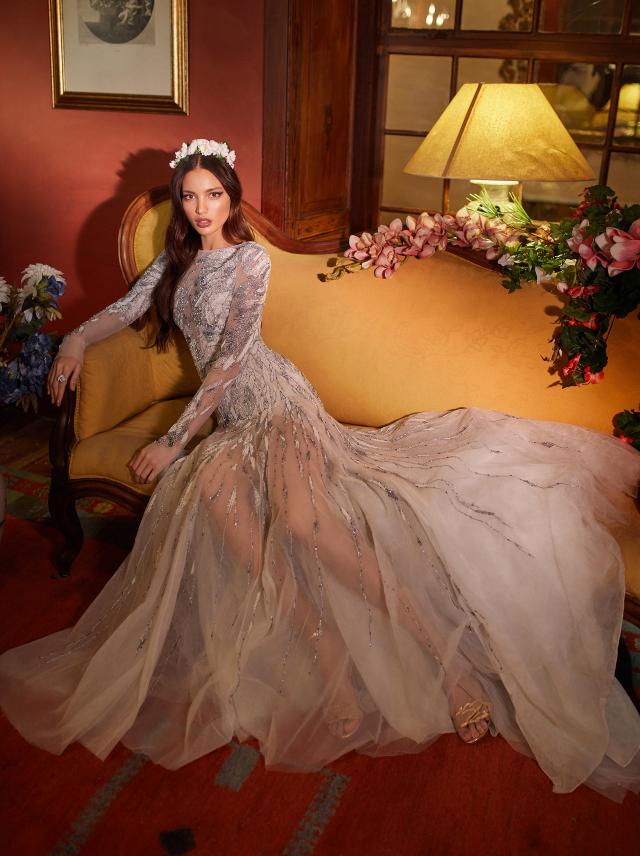
Jewish
It’s customary for Conservative Jewish brides to wear a gown that covers her shoulders for the ceremony and brides who are more conventional choose dresses that are even more modest. Luckily, bridal gowns with long sleeves, high necklines, and floor-sweeping trains are a bridal favorite. The Emrys tulle gown with elegant filigree embroidery follows tradition and will have you looking like a vision under a lush floral chuppah.
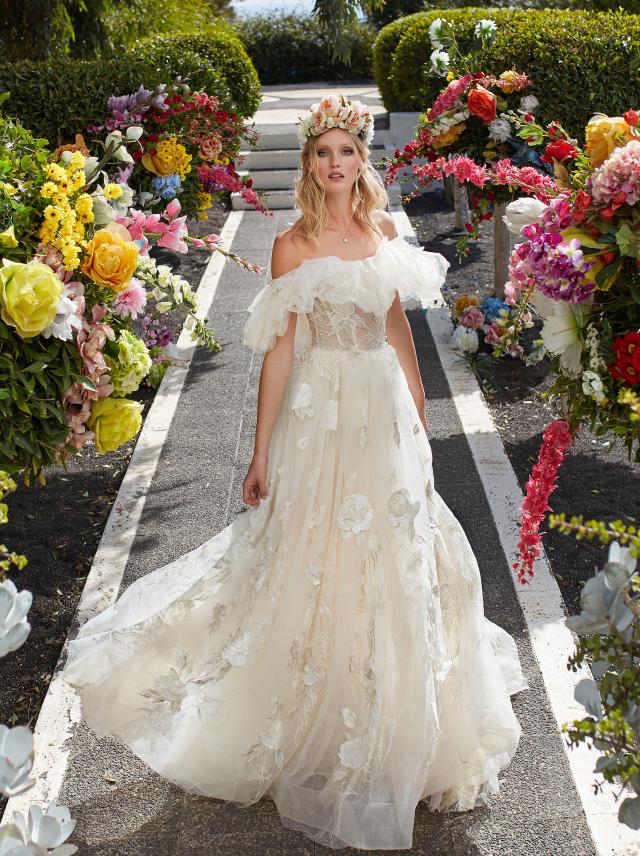
Mexican
Mexico’s vibrant culture is steeped in the country’s indigenous roots and Spanish heritage, both of which are prominent in their traditional weddings. A novia who wants to honor her indigenous roots may choose a dress with intricate embroidery and a ruffled off-the-shoulder neckline. And a bride who wants to celebrate her European ties may choose a wedding gown with flamenco influence—a sweetheart neckline and ruffled skirt. The Casablanca Lily combines the best of both styles with a ruffled neckline, 3D-rose embroidery, fitted bodice, and full skirt.
Spanish
Historically, it was customary for a Spanish bride to wear a black lace gown with a black lace veil called a mantilla draped over her head and shoulders to symbolize her devotion to her husband until death. Over the years, Spanish brides took on the tradition of wearing white, but continued the custom of the lace dress and mantilla. This look has become a favorite for many brides around the world. The Nissa lace gown worn with a cathedral-length mantilla is every bit the picture of a classic Spanish bride.
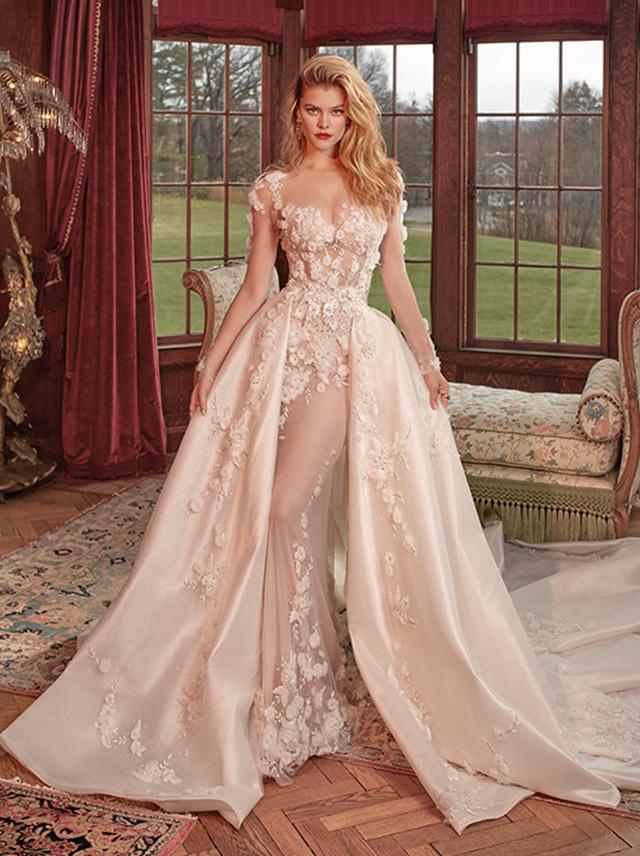
Greek
Greek brides do it up big. A traditional Greek wedding is a huge family-and-friends affair filled with lots of dancing, food, and a red carpet-like dress code. When it comes to the wedding gown, the more glamorous the better. Once dinner is over, music and dancing are nonstop so choose a dress that’ll let you transform your look throughout the day. The lavishly-embroidered Thea (meaning “goddess” in Greek) with a detachable ballgown overskirt will make you feel regal at the ceremony and then celebrate through to the afterparty.
Scottish
Scottish bridal attire isn’t all tartan skirts and sashes, white gowns are also traditional for Highland brides. A classic wedding-day look for the contemporary Scottish bride, which purposefully blends the old with the new, is a romantic lace dress with long embroidered sleeves, a modest necklace, and a short train worn with flowers in her hair instead of a veil. The Snow in Summer high-neck, lace mermaid gown will look stunning next to your groom’s tartan kilt or traditional morning suit.
Indian
A traditional Indian wedding is the original wedding weekend. Held over three days, the celebration consists of a series of events, including an intimate ceremony called the ganesh pooja, with just the couple, bridal party, and close family to kickoff the nuptials; the mehndi ceremony, where the bride’s hands and feet are decorated with henna; the sangeet, where both families are introduced and all of the guests are invited; and the main ceremony and reception. All of these events call for a lot of different outfits for the bride. Many contemporary Indian brides wear the traditional beautifully-embellished, red two-piece dress for their wedding ceremony and then change into a white gown for the reception. The allover embroidery on the Lindsay gown is as detailed as the elaborate adornment on a sari, making it a perfect option for the reception.
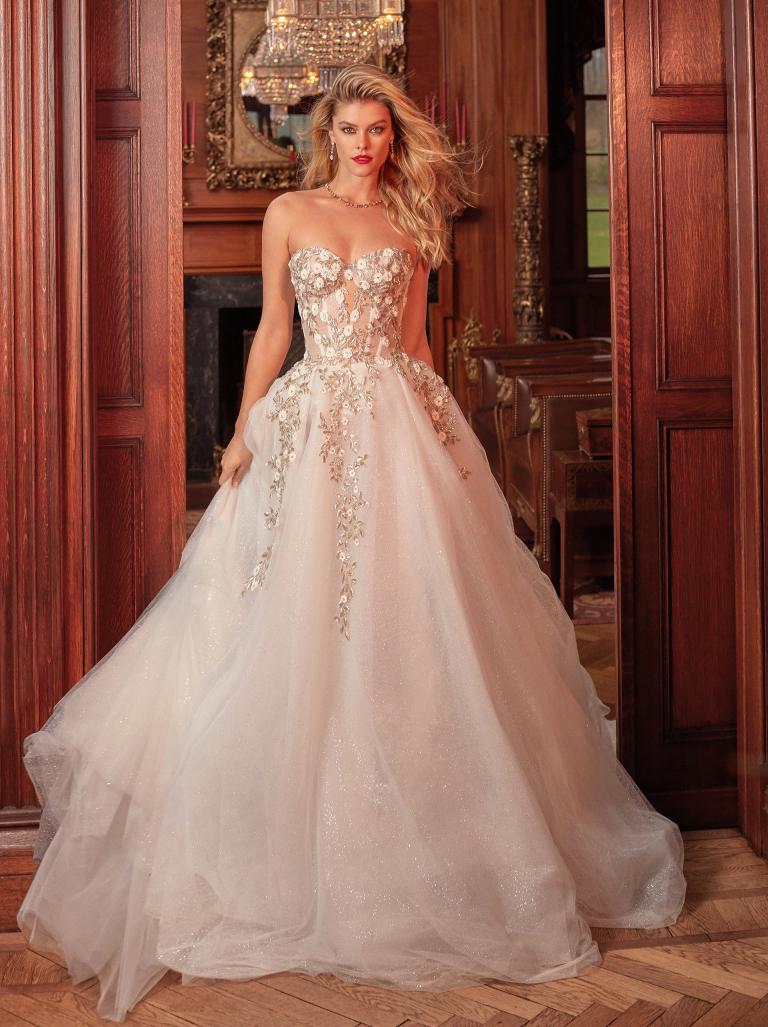
Chinese
Whereas in some cultures, brides wear their traditional bridalwear for the ceremony then change into a contemporary white gown for the reception, Chinese brides wear white for the ceremony then don a customary red cheongsam (also known as a qipao) for their reception. The crimson color, symbolizing luck, prosperity, and happiness in Chinese culture, is used throughout a traditional wedding. Further honor your heritage by wearing a white gown with gold accents to symbolize wealth and fortune, like the Aelin, for your walk down the aisle.
Nigerian
Dancing is a huge part of a Nigerian wedding, from both families dancing down the aisle during the procession, to the bride and groom’s entrance as husband and wife, to the dance off with choreographed steps between the bride and her bridesmaids and the groom and his groomsmen at the reception. That said, you’ll need a gown that’ll let you shine as you show off your best moves. The Tesla gown with its peplum waist is reminiscent of the traditional wedding dress many Nigerian brides wear. The flirty, flounced detail will accentuate your waist as you dance all night.